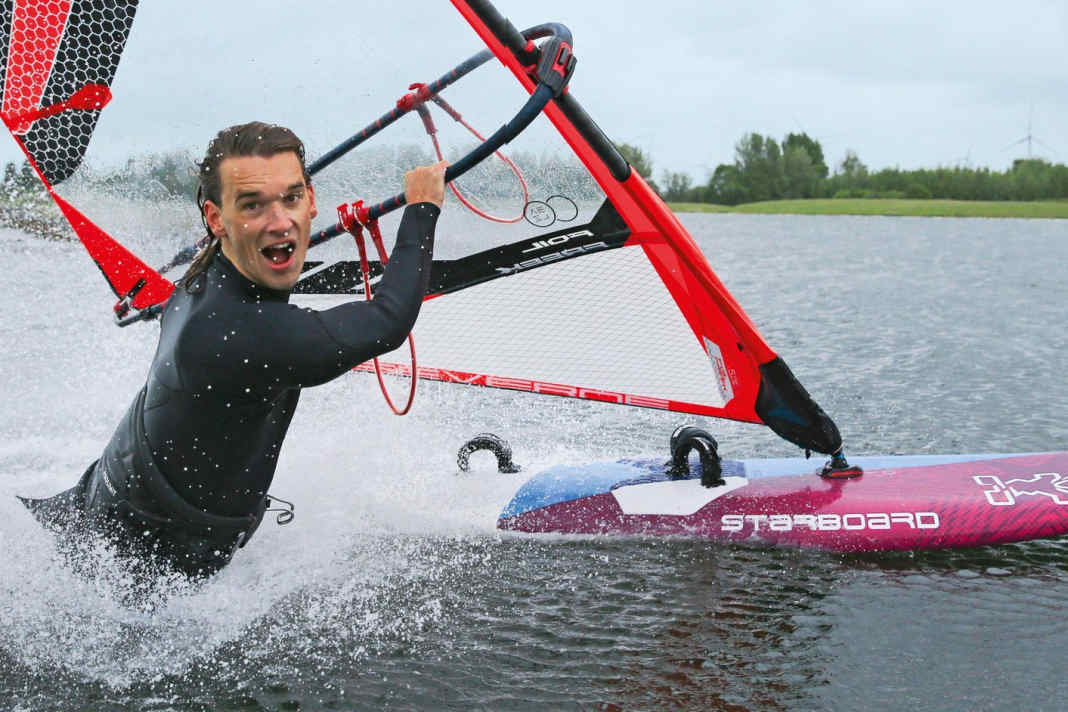





Due to the not too big mental hurdle, everyone's fingers - or rather feet - start to itch at some point. It's only a matter of time before a manoeuvre-oriented windsurfer simply jumps out of the loops. When the time comes, we'll show you how to glide elegantly over the water behind the board and find the right balance between sinking and catapulting. A certain amount of water contact is obviously unavoidable during this manoeuvre. If it gets too warm for the wetsuit this summer, make sure you wear board shorts or a bikini when practising: Because one of the most popular mistakes is actually letting your entire body drag through the water, whereas with a properly executed body drag, only your legs actually get wet.
The fine line between precision landing and catapult: a glided-through body drag looks fluid and casual." - Julian Wiemar, surf editorial team
If you pay attention to a few important crucial points, you can avoid the classic mistakes from the outset - and conjure up the body drag on the water this summer at best. Have fun with wet grinding!
Ideal conditions for the first body drag
Driving skills
Safe planing is a basic requirement for the body drag. Previous knowledge of board and sail control in carving manoeuvres will not hurt.
Suitable material
Even if you can be pulled behind by any material with the right technique, camberless, manoeuvre-oriented sails with a short boom are the easiest to steer and control. With large feeride sails (from six square metres), the lower leech quickly drags through the water during body drag. It is easier to jump back onto the wide tail of a freestyle or freemove board than onto a small waveboard or speedneedle.
Spot and wind
The smoother the water, the easier the body drag. Offshore freestyle or speed spots, where choppy waves are blocked by sand or piers, invite you to give it a go. If you are descending for the first time, you should have good pressure in the sail, but not be mercilessly overpowered. With too much pressure, you will quickly go over the front - too little sail draft can be frustrating, as it is more difficult to get back on the board.
How the body drag works
Before getting off, make sure you have enough space around you: During the first few attempts, some people like to be overwhelmed by the unusual feeling of no longer being able to steer the board directly over their feet - and let go of the rig: the material then continues to ride straight ahead without any crew. It is important to be aware of one thing during the approach: With a clean bodydrag, you drop slightly onto a space wind course during the manoeuvre - in a decent but constant turn - and not before you get off the boat. The thrust of the turn (slingshot effect) is used to jump back onto the board with sufficient momentum. This is essential, especially when there is less wind, in order to glide through the manoeuvre. You should always have a little buffer to leeward so that you don't end up in a dead spot - and thus no longer be able to generate pressure to climb up.
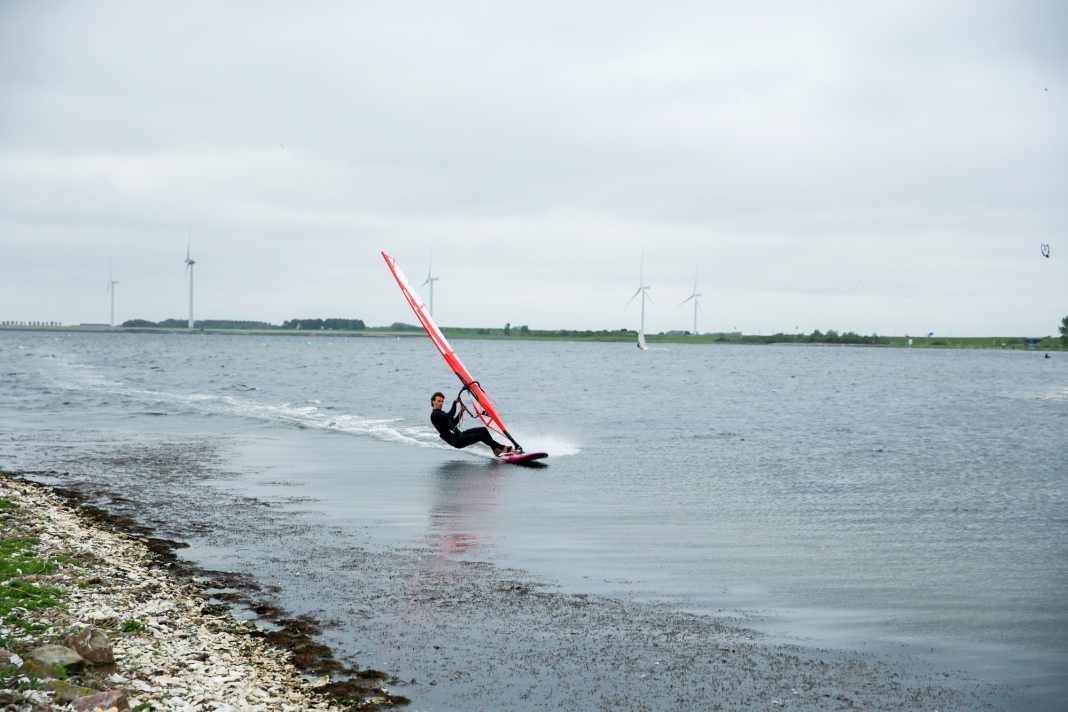





With a glided bodydrag, you hover over the board for a short time as you ascend. This requires a lot of practice and sensitivity for the forward impulse - because here you move on a fine line between spot landing and catapulting over the bow. Try to keep the momentum moderate at the beginning by keeping the sail close but far back. First the back leg comes back onto the board, then the front leg.
If you don't land weightlessly on your first few attempts, you can also push yourself up with your back leg like a waterstart and still complete the bodydrag. This is a great way to feel your way around, bodydrags are fun and not dangerous.
But now quickly get back into the foot straps and pretend nothing happened. Or initiate the jibe straight away - the possibilities feel endless once this casual manoeuvre is in place.

The most common body drag errors
Let's take a closer look at the two biggest mistakes. Two things can often happen during the first attempts: Either you sink with outstretched arms (picture 1, see below) - or it goes over the bow forwards in rocket flight (pictures 2-3, further below). The aim is to find the right angle and thus the fine line between sinking and skidding by adapting your body position in combination with moderate sail control. In principle, there are only two major sources of error when bodydragging:
Arms are stretched
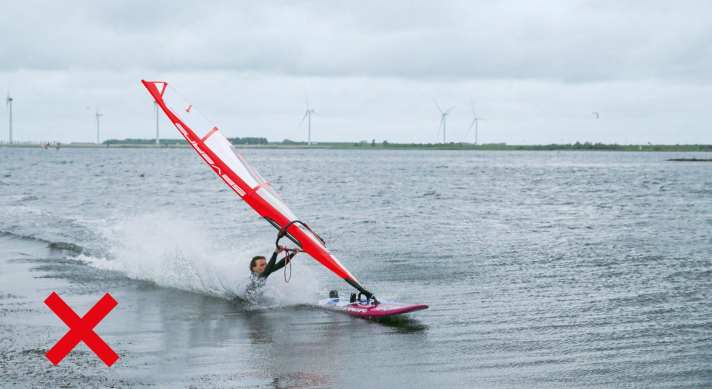
Out of respect for the forward skid, you jump out far backwards. Your whole body drags through the water with your arms outstretched and creates a lot of resistance - you slow down quickly and have no chance of getting back onto the board.
TIP: Keep your arms bent throughout and pull the boom towards your chest. This keeps you upright and transfers your body weight to the base plate via your front hand. Secondly, don't jump off with both legs at the same time - this usually creates so much resistance that you can't withstand the sail pressure and your arms automatically straighten.
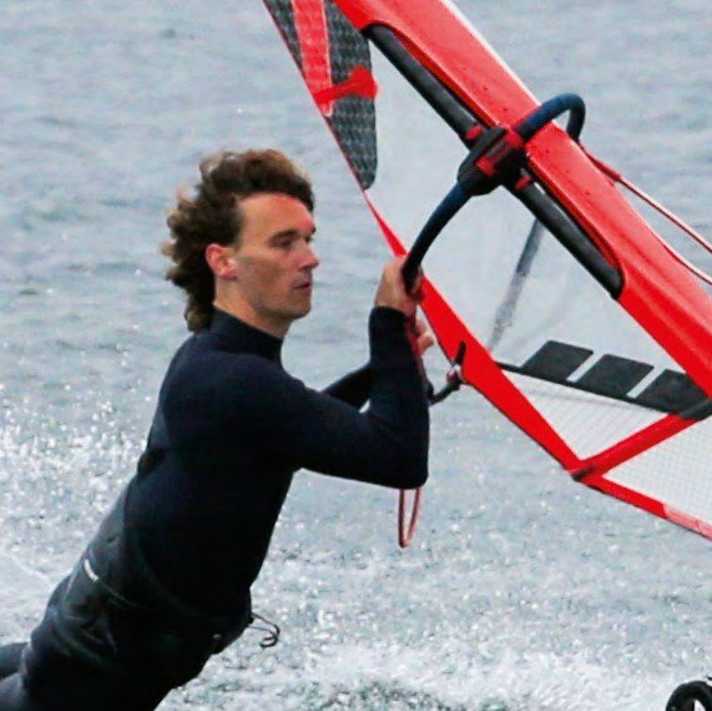
Sail too upright
You try to stay very upright to make sure you get up and back onto the board this time - but you spin forwards. This is a great way to practise the spin loop - no fun! And that's exactly the mistake: the sail straightens up too abruptly due to the active sheet in, which leads to a drop with the mast arm stretched out. The board doesn't turn with you and you suddenly get a strong impulse forwards, as with a spin loop. This often happens if you initiate the body drag too much downwind.
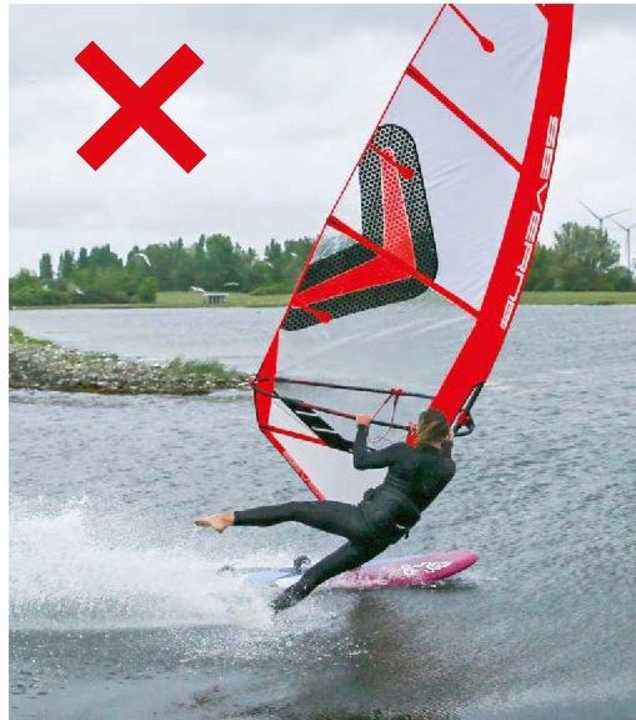
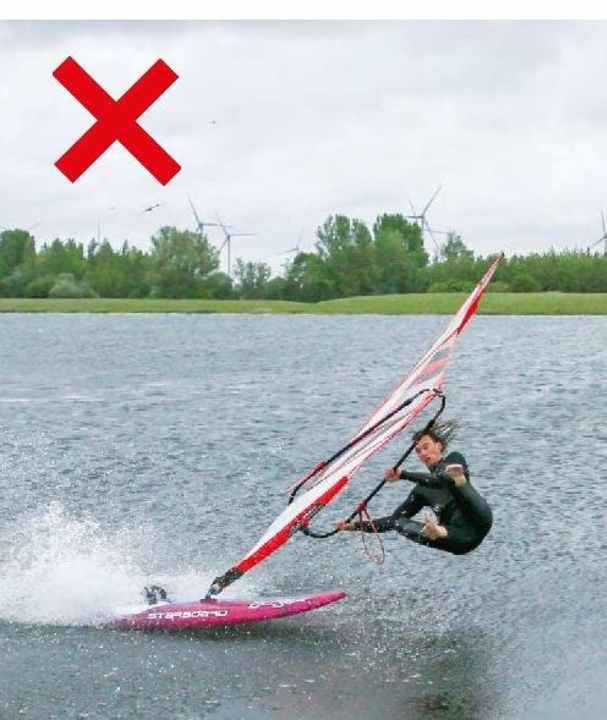
TIP: Keep the sail tight but aft - try to push the outhaul towards the water. An introduction on a half-wind to light closehauled course also helps to avoid the catapult over the bow.
FUN-FACT:
If it gets that far, it's usually better to hold on tight, look back and turn into a spin loop without a board. This significantly reduces the chance of you hitting your equipment or the mast shattering the tip of your board. A complete By the way, you can find a Spinloop tutorial here

